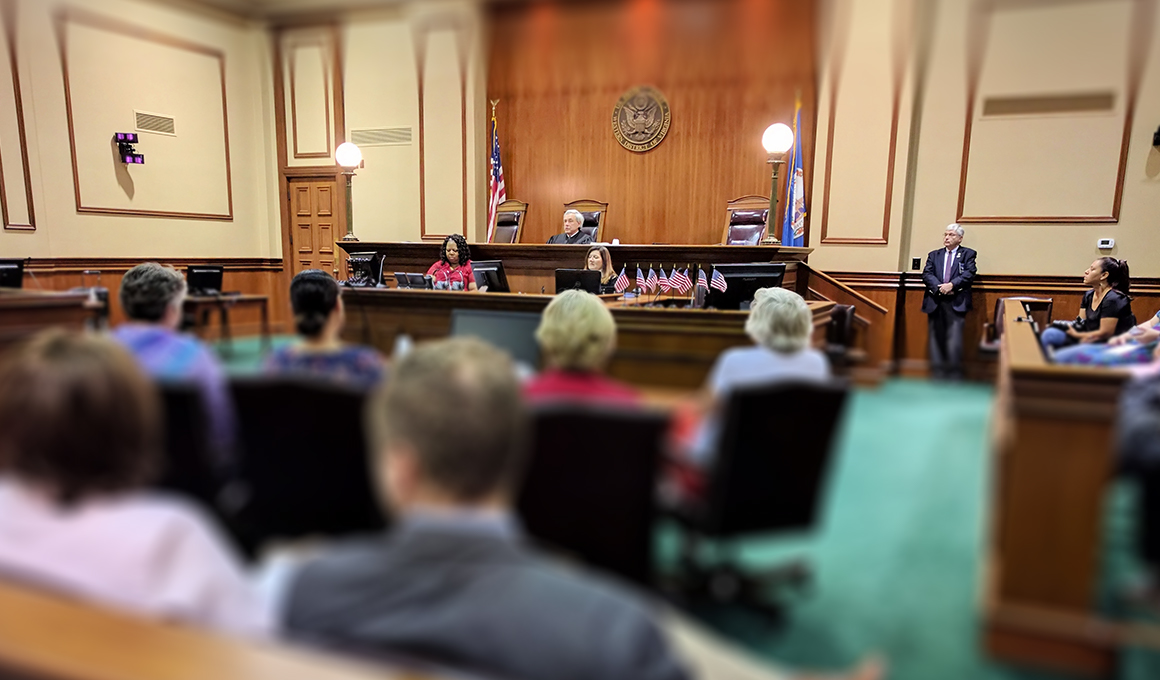Lawyers trust professional trial presentations to support their courtroom strategy.
Lawyers trust professional trial presentations to support their courtroom strategy.
Blog Article
Just How Trial Presentations Enhance Your Disagreement and Convince Jurors
Test presentations work as a critical device for enhancing lawful disagreements and convincing jurors. By incorporating aesthetic aids, narrative structures, and psychological engagement, attorneys can produce an engaging instance that resonates on several levels. The tactical use visuals not only clarifies complicated details yet also catches jurors' interest a lot more efficiently than words alone. Nonetheless, the art of storytelling plays a similarly critical role in changing accurate proof into a compelling narrative, shaping jurors' understandings - trial presentations. Recognizing these aspects can considerably influence test end results, raising the inquiry of exactly how each component adds to this elaborate dynamic.

Significance of Visual Aids
Aesthetic help play an important role in boosting the performance of trial presentations, as they can significantly increase audience interaction and retention of details. In the context of a test, where jurors are entrusted with handling complicated details, visual aids offer to simplify and make clear bottom lines. Charts, charts, and pictures can share information and concepts that may or else bewilder or perplex jurors, permitting a more uncomplicated understanding of the proof presented.
Furthermore, visual aids aid in maintaining juror focus throughout the procedures. By damaging the uniformity of spoken testimony, these tools can punctuate vital disagreements, making them extra remarkable. Effective aesthetic help can also stimulate emotional responses, which can be critical in persuading jurors to straighten with the presenter's narrative.

Crafting Engaging Narratives
A compelling story is vital in trial discussions, as it functions as the foundation of efficient persuasion. It enables lawyers to weave with each other truths, proof, and psychological aspects into a coherent story that reverberates with jurors. This narrative structure makes it possible for jurors to comprehend the intricacies of the instance while leading them through the attorney's disagreement.
To craft a compelling story, attorneys should focus on clearness and comprehensibility. This includes establishing a clear lead character-- typically the client-- and outlining their journey with the occasions in inquiry. Offering the realities in a rational series boosts comprehension and keeps involvement. In addition, making use of vivid summaries can develop mental photos that assist jurors picture the check my site events, making the story extra unforgettable.
Additionally, integrating vital themes throughout the discussion enhances the core message and help in retention - trial presentations. The narrative must not just communicate details however likewise evoke a feeling of justice, highlighting the risks included. Inevitably, a well-constructed story cultivates a link in between the jurors and the situation, placing the attorney's disagreement as both trustworthy and engaging, therefore boosting the chance of a desirable decision

Engaging the Court Emotionally
Reliable court involvement hinges on the lawyer's ability to link with jurors on an emotional level. This link can substantially influence jurors' assumptions and their best decision-making.
Visual help, such as photographs or videos, can further improve psychological interaction, providing jurors with brilliant representations of the instance's human components. Crafting a story that highlights the battles and victories of the people included guarantees that jurors see past the legal debates and identify the human consequences of their decisions.
A lawyer's enthusiastic shipment can resonate with jurors, reinforcing their emotional investment in the case. It's necessary to stabilize psychological appeals with accurate evidence, guaranteeing that jurors really feel obliged to act while staying based in the truth.
Structuring Your Presentation

The body of the presentation ought to be realistically fractional right into bottom lines, each sustained by compelling proof. It is advantageous to use narration techniques to weave truths into a narrative that jurors can conveniently follow. Visual help, such as charts and videos, can enhance comprehension and involvement, aiding to highlight important items of proof.
Real-World Case Researches
Analyzing real-world situation research studies gives vital understandings right into the art of trial presentations and persuasion. More hints The spots instance of "O.J. Simpson v. Individuals of California" highlights how aesthetic help and compelling narratives can guide jury understandings. The protection group efficiently employed an approach that combined high-profile expert testaments with multimedia presentations, which captivated jurors and inevitably affected their choice.
Another remarkable instance is the "McDonald's Coffee Situation," where the complainant's lawyers made use of visuals images of the injuries received by Stella Liebeck. trial presentations. This stark visual proof played a vital duty in sharing the intensity of her burns, resulting in a substantial court honor. Such cases demonstrate that impactful trial presentations frequently depend upon the efficient assimilation of visuals and narration to evoke emotional feedbacks from jurors
In addition, the "Casey Anthony Trial" highlighted the value of narrative coherence and trustworthiness. The prosecution's failing to develop an engaging timeline reduced their persuasive power, underscoring the necessity of a well-structured discussion. Examining these situations exposes that effective test discussions call for calculated planning, emotional involvement, and the capability to resonate with jurors' worths and beliefs.
Verdict
Test presentations considerably improve debates and persuade jurors with the critical use visual aids, engaging stories, and psychological engagement. By simplifying complicated information and fostering connections with the audience, these elements develop an unforgettable and impactful experience. A well-structured presentation balances sob stories with factual evidence, inevitably resonating with jurors' values. The assimilation of these strategies not only affects decision-making but likewise highlights the relevance of reliable communication in the courtroom.
Report this page